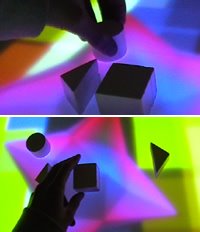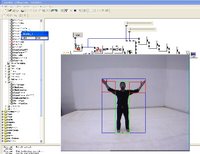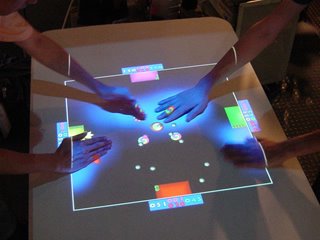Data Sonification
The conversion of data traffic into audio representations - types of data, speed, events - converted into an ambient and informative sonic landscape.
This notion was first suggested to us by Paul Anderson of Informatics who gave me the reference to Peep, an OS package that converts data events into bird song and ambient sounds of water and rain.
MP3 audio sample of Peep
More recently I came across iSIC which is short for information music - an ambitious and advanced java based research project and system inspired by peep.
MP3 audio sample of iSIC
A thorough and interesting article written by the project leader, William Farkas, on data modelling through music can be found here at vague terrain
This notion was first suggested to us by Paul Anderson of Informatics who gave me the reference to Peep, an OS package that converts data events into bird song and ambient sounds of water and rain.
MP3 audio sample of Peep
More recently I came across iSIC which is short for information music - an ambitious and advanced java based research project and system inspired by peep.
MP3 audio sample of iSIC
A thorough and interesting article written by the project leader, William Farkas, on data modelling through music can be found here at vague terrain









